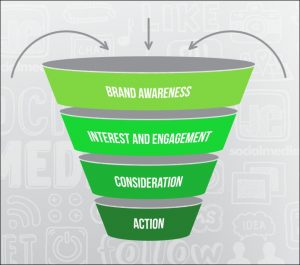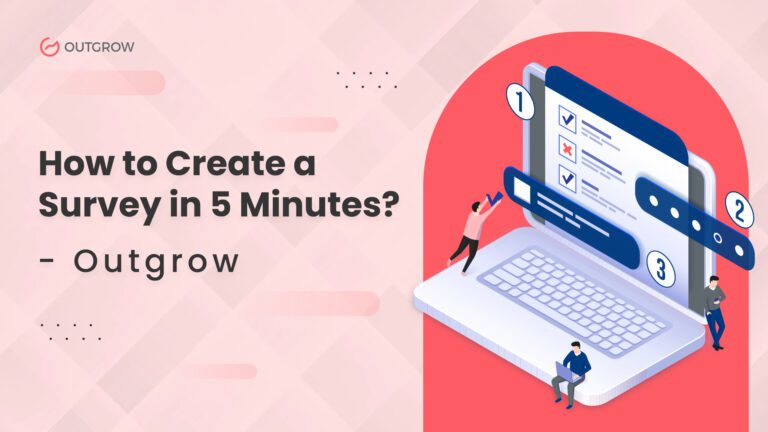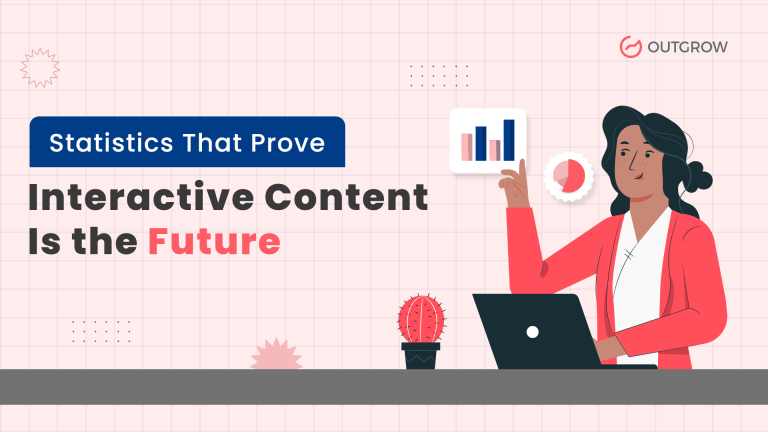How to Create Content Engagement Strategy With the Right Metrics
Table of Contents
Content engagement is often taken as the holy grail for many marketers. Looking at content analytics can help determine if a strategy is working and make any adjustments necessary.
Even though 75% of marketers are reporting on how their campaigns are influencing their revenue growth, some of them aren’t looking at the right metrics to accurately measure their success.
Reporting on the number of Instagram likes, blog post views, or Facebook post impressions is often only scratching the surface of how people are engaging with your content.

But are your engagement KPIs really providing the value that you need? Let’s dive in and see if there is a better way to define your content marketing strategy for improved content engagement.
What Is Engagement and Why Do We Need a Strategy?
The first problem that most marketers face is defining what content engagement means. It can often be perceived as a vague term that doesn’t necessarily lead to any monetary value.
Furthermore, some marketers make the mistake of only looking at a few specific content engagement metrics. Metrics such as likes, comments, number of followers are often eye candy for the upper management.
These metrics do hold some value – they can help you understand if your content is resonating with your audience, building a community, or expanding your overall reach.
But they can be valueless if they don’t fit in your marketing funnel. Say your goal is to increase sales, yet your target metrics are to garner x number of likes… you’re hardly setting yourself up for success. As much as it’s nice to see a post get thousands of likes, how does it actually support an organization’s goal to increase revenue?
The truth is that there is a difference between engagement and meaningful engagement. Good engagement is when a person actually takes the action you want them to when they see your content, such as redirecting to your site, sharing your content, or subscribing to your newsletter.
Essentially, an engagement strategy won’t be successful if you don’t have a marketing funnel in place to convert your audience. So, how to create an engagement strategy that works for you? Let’s find out!
How Does an Engagement Strategy Fit Into Your Marketing Funnel?
In order to determine which metrics you should focus on, the first step is to create an overall marketing goal. A goal is a specific, measurable objective that grows your business in some way.
Marketing goals can include raising brand awareness, increasing the number of customers or readers, or strengthening the relationship between you and your audience.
And once you’ve established your marketing goal, you can create a funnel. A funnel is critical to ensure the success of your marketing goal. A good funnel demonstrates the customer journey a person takes upon discovering your brand until they become loyal followers.
A marketing funnel generally has 4 categories:

Awareness
This involves finding people that have never heard of you before and piquing their interest in getting to know you.
Engagement
Here your audience starts interacting with you or your content and building the know-like-trust factor.
Consideration
After a few interactions, your prospects start to consider buying from you, subscribing to your email list, or sign-up for a trial offer.
Action/Conversion
It’s decision time. The prospects make a choice if they want to convert or not. They either become a customer, subscriber, or stay as a non-buyer.
An engagement strategy mostly focuses on the awareness and engagement stages. Getting an audience involved with your social media, emails, or blog can lead them further down the marketing funnel to reach your overall marketing goals.
Example
Let’s take a look at an example from Melyssa Griffin, who helps entrepreneurs build and grow their businesses through her Instagram marketing funnel. A user may come across her Instagram page in the “Awareness” stage, like what they see, and decide to follow her and move into the “Engagement” stage.
Eventually, they may want to see more content from Melyssa Griffin. And when they click on her Instagram bio link, it takes them to her “Discover Your Money Magnetism Archetype” interactive quiz.
Taking the quiz moves the users into the “Consideration” stage. Moreover, they take the quiz to learn more about themselves, and in the process, Melyssa Griffin gets their email address to nurture and convert them.
The information obtained from the interactive quiz also helps Melyssa Griffin send personalized offers to the users.
Furthermore, the quiz is placed strategically on her website and also as a pop-up to the catch audience’s attention and prompt them to take an action.

Hence, marketing funnels are critical to your success because you will know what content or strategy is ultimately driving business. Without consideration or conversion stage plans, your content engagement strategy won’t help you achieve your overall marketing goals.
In fact, an audience can’t get to the final stages of the marketing funnel if you’re not tracking the right metrics. This is why focusing on the right metrics is important, and we’re going to walk you through whats and the hows.
What Are the Metrics You Should Focus On?
Not all metrics are the same. Some metrics may seem helpful, but there are others that can measure the success of your strategy more accurately.
Let’s take a look at an example:
Social media “reach” is how many people saw your content in their feed. It’s considered an important engagement metric. However, people often don’t retain everything they see while scrolling their feed.
(And before you ask, yes, even if the content appears on the screen for a second, it gets counted as reach.)
So, going back to your marketing funnel, social media reach may help you determine if you are building awareness.
But if you want to know if your audience actually engaged with your advertising campaign, social media reach isn’t the right metric to use. Instead, you want to look at ad recall or the click-through rate. This will give you a better idea of how many people engaged with your content.
Let’s take a look at an Instagram advertising campaign scenario. If the goal was to increase business revenue, which of these metrics do you think your stakeholders will be more impressed by?
- An ad reached over 20,000 people
- An ad grew your email list by 500 subscribers, and 50 of those people became buyers
They would probably be happier to hear about an increase in buyers. Even though a large ad reach is important to build awareness, it’s not the metric that accurately shows how effective you were at converting prospects.
Content Engagement Metrics to Support Your Strategy
When it comes to an engagement strategy, it’s crucial to think about what you want to gain from your content marketing efforts, which, in return, needs to support your overall marketing goal.
Only when you determine the goal of your social media and/or content marketing efforts, can you create an engagement strategy to support it!
- If you want to use your blog to build your email list, you can focus on driving click-through rates to your lead magnet.
- You can track the response rate and time if you’re looking to use social media for customer service.
- If you want to determine the quality of your blog content, take a look at the new vs. returning visitors analytics. Returning visitors suggest loyalty while too many new visitors suggest that the content isn’t engaging enough for visitors to return for more.
Hence, choose the engagement metrics that would best represent the progress of your goals.
How to Create a Content Engagement Strategy?
How can you engage your audience more effectively?
Your audience determines your content’s value, and that same audience needs to feel a desire to engage with you more.
So, here are our top tips for creating content that will boost your content engagement strategy.
1. Create Interactive Content
93% of marketers believe that interactive content is an effective way to educate buyers. The most critical part of an engagement strategy is to actually give the audience the opportunity to get involved. Interactive content can do just that.
From user-generated content to interactive quizzes, this strategy can boost your audience’s engagement with you and leave an impression they would retain for long.
For example, take a look at this quiz on “Which Paris Fashion Week Gown Are You?” Not only does this attract and engage the audience, but also fetches the lead details for you to take them ahead in your funnel.

2. Create Content THEY Want
What you think your audience needs and what they actually want can be two different things. Hence, take the time to get to know your audience persona and deliver valuable content that helps them on their journey.
Take a look at this product recommendation quiz for example. This interactive content makes the process of understanding your customers a cakewalk. Moreover, the personalized recommendations offer real-time value to the users and make way for conversions.
3. Create Content in a Variety of Formats
People like to consume content in a number of ways. Some of us are podcast listeners, some prefer a blog post over a video, while others check their social media more often than their email.
So, it is important to cater to different audiences by creating content in a variety of forms. However, there’s no need to create new content at all times. You can easily repurpose your content to save time and resources and ultimately widen the net to reach more people.
Final Thoughts
Ultimately, your content engagement strategy needs to support your overall marketing plan. Platforms like social media, blogging, and email marketing should all funnel into a bigger goal.
Vanity metrics won’t support your business as much as your engagement strategy can. So, clarify what engagement means to your organization and how it can help you reach your goals. And that is how you’ll find the right content engagement metrics to focus on.
What are your best tips for building an engagement strategy? Let us know in the comments below!

Author’s Bio:

Sabra Mwaura is a Marketing Manager at Disqus, the web’s favorite audience engagement platform. Besides planning her next trip, Sabra is passionate about the use of content marketing and digital publishing to build strong relationships with audiences at scale. Connect with her on LinkedIn.





![Amazing Quiz Ideas You Need to Try ASAP [+Industry-based Templates]](https://outgrow.co/blog/wp-content/uploads/2022/07/outgrow-new-768x432.png)